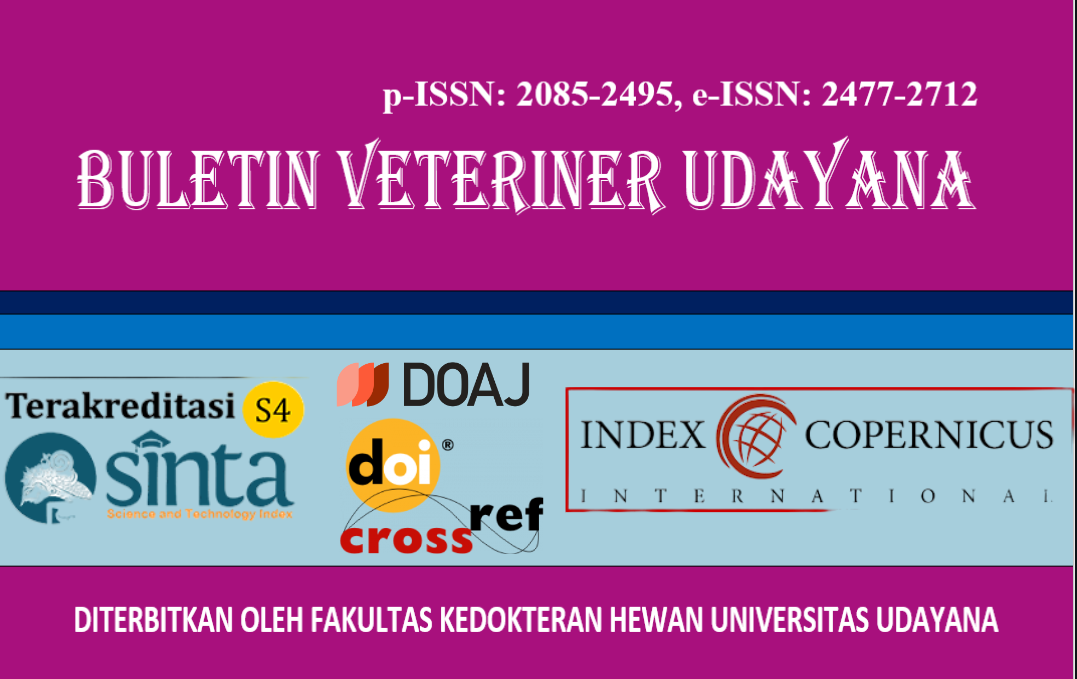MANAGEMENT OF ENDOMETRITIS THROUGH OVARIOHYSTERECTOMY IN A FEMALE DOMESTIC CAT
DOI:
https://doi.org/10.24843/bulvet.2025.v17.i04.p30Keywords:
Endometritis, Ovariohysterectomy, Domestic catAbstract
Endometritis is inflammation that occurs in the endometrium. Endometritis is caused by post-abortion bacterial infection, dystocia, and retained placenta. This case study aims to find out how to diagnose and treat cases of endometritis in female cats. A white female domestic cat, 7 months old and weighing 2 kg, complained of decreased appetite, weakness, and a thick, milky white discharge from the vagina. Supporting examinations are carried out in the form of routine hematology examinations and ultrasound to support the diagnosis. Routine hematology results showed an increased WBC value and an ultrasound examination showed results showing an enlarged uterus and anechoic-hypoechoic or grayish black fluid. The cat was diagnosed with endometritis with a fausta prognosis. Treatment is carried out by surgical ovariohysterectomy with a combination of intravenous xylazine and ketamine anesthesia. After surgery, cefotaxime sodium (20 mg/kg BW, IV, q12h) was given for 3 days and continued with cefixime (10 mg/kg BW, PO, q12h) for 7 days. On the 12th day the cat was declared cured with the surgical wound completely fused, the suture threads had been removed, and the cat's condition was observed to be healthy with normal appetite and drinking, normal urination and defecation. Endometritis in cats must be treated immediately to prevent further infection from becoming pyometra.




